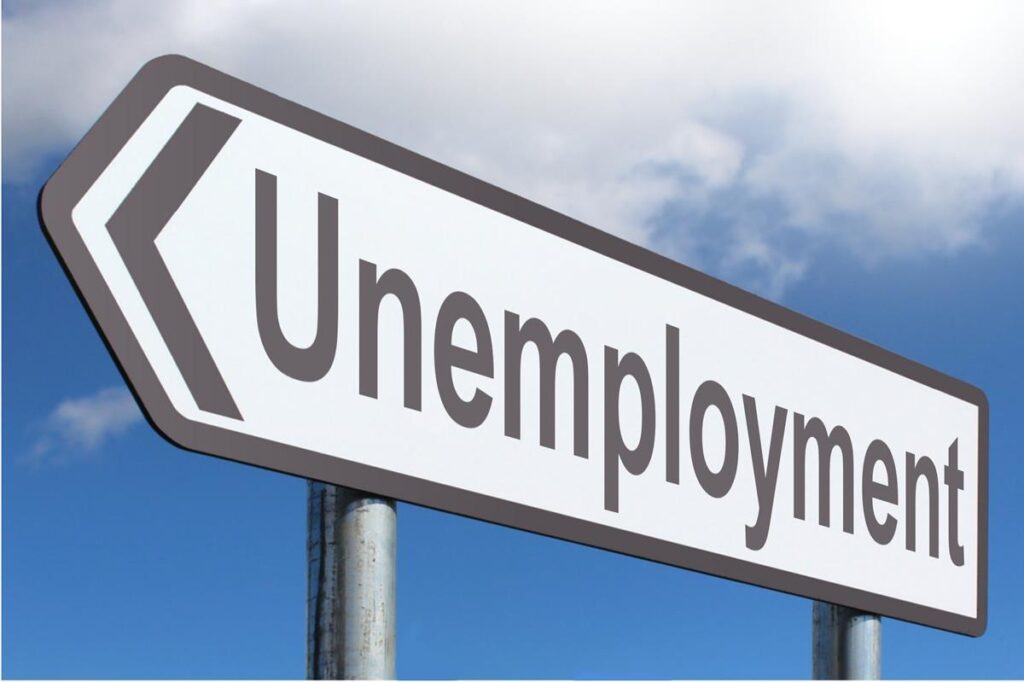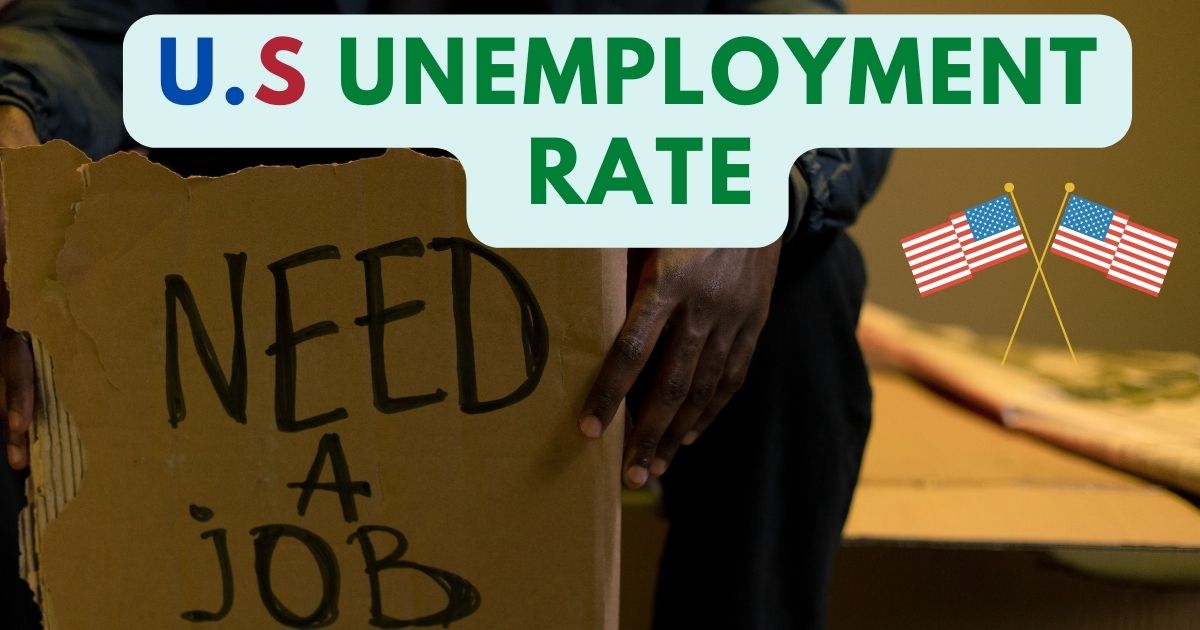In the United States, the unemployment rate measures the percentage of people without jobs but actively seeking employment over a 30-day period. This number represents those who are unemployed and are actively searching for work, and doesn’t include people who have given up looking or part-time workers in need of full-time work. This number has been steadily decreasing since the recession. How many people are unemployed in the US? We take a look at the most recent rates to find out.
Unemployment Rate of USA Definition
The US unemployment rate, also called the unemployment rate in the United States or the jobless rate in the United States, is defined as the percentage of workers who are unemployed and seeking employment within the past four weeks. It’s one of the most important economic indicators in the US, with implications both on national and international levels.
The Bureau of Labor Statistics is a government agency that compiles data on employment and unemployment in the United States. Every month, the agency releases a report on the previous month’s unemployment rate. The report also includes data on the number of unemployed people in each state. The U.S. Bureau of Labor Statistics (BLS) calculates two different rates that measure how many people are unemployed at any given time: the current rate and the seasonally adjusted rate.
What is the Current Unemployment Rate of US 2024
The Bureau of Labor Statistics reports that the current US unemployment rate in 2024 was 3.7 percent.
The current unemployment rate measures how many Americans do not currently have a job but want one right now, while the seasonally adjusted rate includes all citizens over 16 years old who do not currently have a job regardless of whether they’re looking for one or not. For example, someone out of work with a spouse still employed would be counted as unemployed under the current rate, but would not be counted under the seasonally adjusted rate.

Unemployment Rate of US State wise & Month wise in 2024
As of 2024, the unemployment rate for the United States was 3.6%. The unemployment rate varies by state, with Nevada having the highest rate at 5.5% and Minnesota having the lowest at 3.0%. The unemployment rate also varies by month, with February typically having the highest rate and August typically having the lowest. However, this number will differ from state to state.
| State | Rate(p) |
|---|---|
| Alabama | 2.5 |
| California | 4.3 |
| Colorado | 2.9 |
| Delaware | 4.6 |
| District of Columbia | 4.7 |
| Florida | 2.6 |
| Idaho | 2.6 |
| Illinois | 4.5 |
| Iowa | 2.9 |
| Kansas | 2.9 |
| Maryland | 2.9 |
| Michigan | 4.3 |
| Minnesota | 3.0 |
| Missouri | 2.6 |
| Montana | 2.4 |
| Nebraska | 2.3 |
| Nevada | 5.5 |
| New Hampshire | 2.7 |
| New York | 4.2 |
| North Dakota | 2.1 |
| Oregon | 4.7 |
| Pennsylvania | 4.4 |
| South Dakota | 2.1 |
| Texas | 4.0 |
| Utah | 2.4 |
| Vermont | 2.8 |
| Washington | 4.6 |
| Wisconsin | 2.7 |
By 2024, it is estimated that the national unemployment rate will be around 3.6% and in 2025 it will be 3.8%.
This is due to a number of factors such as the coronavirus pandemic and businesses closing down or scaling back operations. Other factors include economic recession, jobs offshoring, technological innovation (e.g., self-driving cars), automation, opioid epidemic etc.
Since most of these effects are temporary, it is not clear how long the high levels of unemployment will last or what their consequences might be. One thing is certain though; this trend is not sustainable. It is clear that something needs to change in order to stop the number of unemployed people growing.
Number of Unemployed in US 2024
The United States had an unemployment rate of 3.6 percent in 2024, according to the Bureau of Labor Statistics (BLS). This means that there were 5.7 million unemployed people in the US that month. The unemployment rate peaked at 10 percent in October 2009 during the Great Recession, but it has slowly declined since then. In February 2021, after the pandemic, the unemployment rate was 4.9 percent. There were 7.6 million unemployed people in the US.
What was the Highest Unemployment Rate in US History?
- The highest unemployment rate in U.S. history was 24.9% in 1933 during the Great Depression. Today, the unemployment rate is much lower, but it’s still a concern for many Americans.
- The second-highest unemployment rate in U.S. history was 10.8% in November 1982.
What was the Lowest Unemployment Rate in U.S. History?
- The lowest unemployment rate in U.S. history was 1.2% in 1944. That year, the country was in the midst of World War II, and there was a high demand for workers to support the war effort. Big corporates and businesses were booming, and the economy was strong.
Influencing Factors on the U.S Unemployment Rate
There are a number of factors that influence the unemployment rate in the United States, including the number of people leaving the workforce, hiring rates, and economic growth. The current pandemic has had a significant impact on unemployment rates as well, with many businesses shutting down or reducing hours. In November 2009, there were 25.2 million unemployed workers nationwide, but by December 2010 this number was up to 27.5 million. From January 2007 to July 2011, the unemployment rate increased from 4.4% to 9.1%. After reaching its peak at 10.0% in October 2009, it fell to 8.6% in June 2011 before rising again over the next two months (reaching 9.0%). According to data compiled by the Bureau of Labor Statistics, approximately 45 percent of unemployed individuals have been without work for 27 weeks or more (as of December 2012).
One reason for such long-term unemployment is a mismatch between what employers want and what jobseekers can offer, which can be caused by skills deficiencies, lack of adequate training, geographic location, age, disability status and criminal history. Another factor contributing to high levels of long-term unemployment is low wages. For example, one study found that about 15% of those who were employed during the Great Recession experienced involuntary employment loss because their employer did not provide sufficient wage compensation. A lack of health insurance also contributes to higher rates of prolonged unemployment; research shows that uninsured individuals are between two and four times more likely than insured counterparts to experience long-term joblessness after a job loss.
US Unemployment Rate Before and After COVID-19
The US unemployment rate had reached a 50-year low of 3.5% in February 2020. However, due to the coronavirus pandemic, the unemployment rate increased to 14.7% in April 2020. The number of unemployed people in the US increased from 5.8 million in February to 23 million in April. The unemployment rate is now higher than it was during the Great Recession of 2008-2009.
In May 2020, the unemployment rate fell to 13.3%, but this is still much higher than it was before the pandemic. In terms of state unemployment rates, the New York State has had an increase in its unemployment rate from 4.4% in December 2019 to 8.1% in March 2020. Other states with high unemployment rates include Michigan (9.2%), California (6.2%), and Ohio (6.0%). In contrast, Texas had an unemployment rate of 2.9% as of March 2020, which is down from 4.1% in December 2019 and below the national average of 3%. States with relatively low unemployment rates also include Alabama (2.8%), Tennessee (3.0%), Mississippi (3.2%), and South Carolina (3.4%).
Unemployment Benefits in USA
If you’re out of work and looking for unemployment benefits in the United States, there are a few things you should know. First, the unemployment rate is a measure of the percentage of people in the labor force who are looking for work but cannot find it. The unemployment number fluctuates from month to month as people enter and leave the workforce. Third, unemployment benefits are available to eligible workers who have lost their jobs through no fault of their own.
To receive benefits, you must file a claim with your state’s unemployment office. You will be asked about the reasons for your job loss and how much money you earned before becoming unemployed. Your eligibility for unemployment compensation will depend on several factors, including whether you qualified for regular benefits (your earnings per week), if you voluntarily left your job, and the number of weeks you worked during the base period (usually six months). The maximum amount of time that an individual can collect weekly benefits is 26 weeks.
In order to qualify for an extension, your continued lack of employment needs to be due to circumstances beyond your control, such as illness or injury that has resulted in a diminished capacity to work; natural disaster; military service; involuntary layoff because of plant closure or curtailment; or reemployment after retirement. You also need to demonstrate what you are doing to look for new work. A reduced benefit period may apply if you’re enrolled in school full-time.
Causes of Unemployment in USA
There are a number of causes of unemployment in the USA. They include people who have lost their jobs due to outsourcing, downsizing, or plant closures; people who are new entrants to the labor market; and people who are reentrants to the labor market after having been unemployed for a period of time.
Other causes of unemployment include frictional unemployment, which is caused by workers who are between jobs, and structural unemployment, which is caused by a mismatch between the skills of workers and the skills required for available jobs. Frictional unemployment also includes those who are involuntarily working part-time because they cannot find full-time work.








